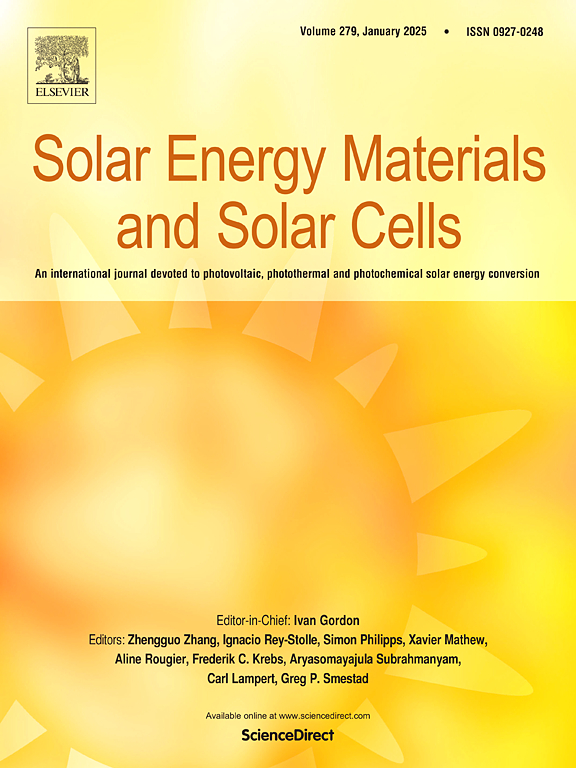Sb2S3/MnS interface optimization for improved all-inorganic Sb2S3 solar cell performance based on NH4F impregnation
IF 6.3
2区 材料科学
Q2 ENERGY & FUELS
引用次数: 0
Abstract
Sb2S3 thin-film solar cells, as an emerging photovoltaic device, have drawn considerable attention due to their large light absorption, abundant raw materials, cost-effectiveness, and environmental sustainability. However, the presence of complex defects, such as vacancy (VS and VSb) and antisite (SbS and SSb), in Sb2S3 thin films and severe interface recombination between the carrier transport layer and the absorber are significant obstacles, which leads to a large discrepancy between the photovoltaic conversion efficiency (PCE) of current solar cells and theoretical predictions. In this study, a facile ammonium fluoride (NH4F) impregnation process was developed to achieve high-performance Sb2S3 solar cells. With the optimal impregnation concentration of 0.07 M and impregnation time of 5 min, this NH4F impregnation treatment effectively produces high-quality Sb2S3 films by reducing surface roughness, improving hydrophilicity, and a preferred [hk1] orientation of Sb2S3 films. Furthermore, the Sb2S3/MnS heterojunction interface was significantly improved by reducing nonradiative recombination and regulating energy level alignment. The final PCE of the NH4F-impregnated Sb2S3 solar cells reached 6.55 %, representing a 21 % enhancement over untreated devices. This study provides a new approach to optimize the photoelectric conversion performance of Sb2S3 photovoltaic devices and simultaneously offers crucial technical support for high-efficiency thin-film solar cells.
基于NH4F浸渍的Sb2S3/MnS界面优化改善全无机Sb2S3太阳能电池性能
Sb2S3薄膜太阳能电池作为一种新兴的光伏器件,因其吸光量大、原料丰富、成本效益高、环境可持续性等优点而备受关注。然而,Sb2S3薄膜中空位(VS和VSb)和对位(SbS和SSb)等复杂缺陷的存在以及载流子传输层与吸收层之间严重的界面复合是导致当前太阳能电池光伏转换效率(PCE)与理论预测存在较大差异的重要障碍。本研究采用易溶氟化铵(NH4F)浸渍工艺制备高性能Sb2S3太阳能电池。在最佳浸渍浓度为0.07 M、浸渍时间为5 min的条件下,通过降低Sb2S3膜的表面粗糙度、提高亲水性和优选[hk1]取向,得到了高质量的Sb2S3膜。此外,通过减少非辐射复合和调节能级对准,Sb2S3/MnS异质结界面得到了显著改善。nh4f浸渍Sb2S3太阳能电池的最终PCE达到6.55%,比未经处理的器件提高了21%。本研究为优化Sb2S3光伏器件的光电转换性能提供了新的途径,同时为高效薄膜太阳能电池提供了关键的技术支撑。
本文章由计算机程序翻译,如有差异,请以英文原文为准。
求助全文
约1分钟内获得全文
求助全文
来源期刊

Solar Energy Materials and Solar Cells
工程技术-材料科学:综合
CiteScore
12.60
自引率
11.60%
发文量
513
审稿时长
47 days
期刊介绍:
Solar Energy Materials & Solar Cells is intended as a vehicle for the dissemination of research results on materials science and technology related to photovoltaic, photothermal and photoelectrochemical solar energy conversion. Materials science is taken in the broadest possible sense and encompasses physics, chemistry, optics, materials fabrication and analysis for all types of materials.
 求助内容:
求助内容: 应助结果提醒方式:
应助结果提醒方式:


